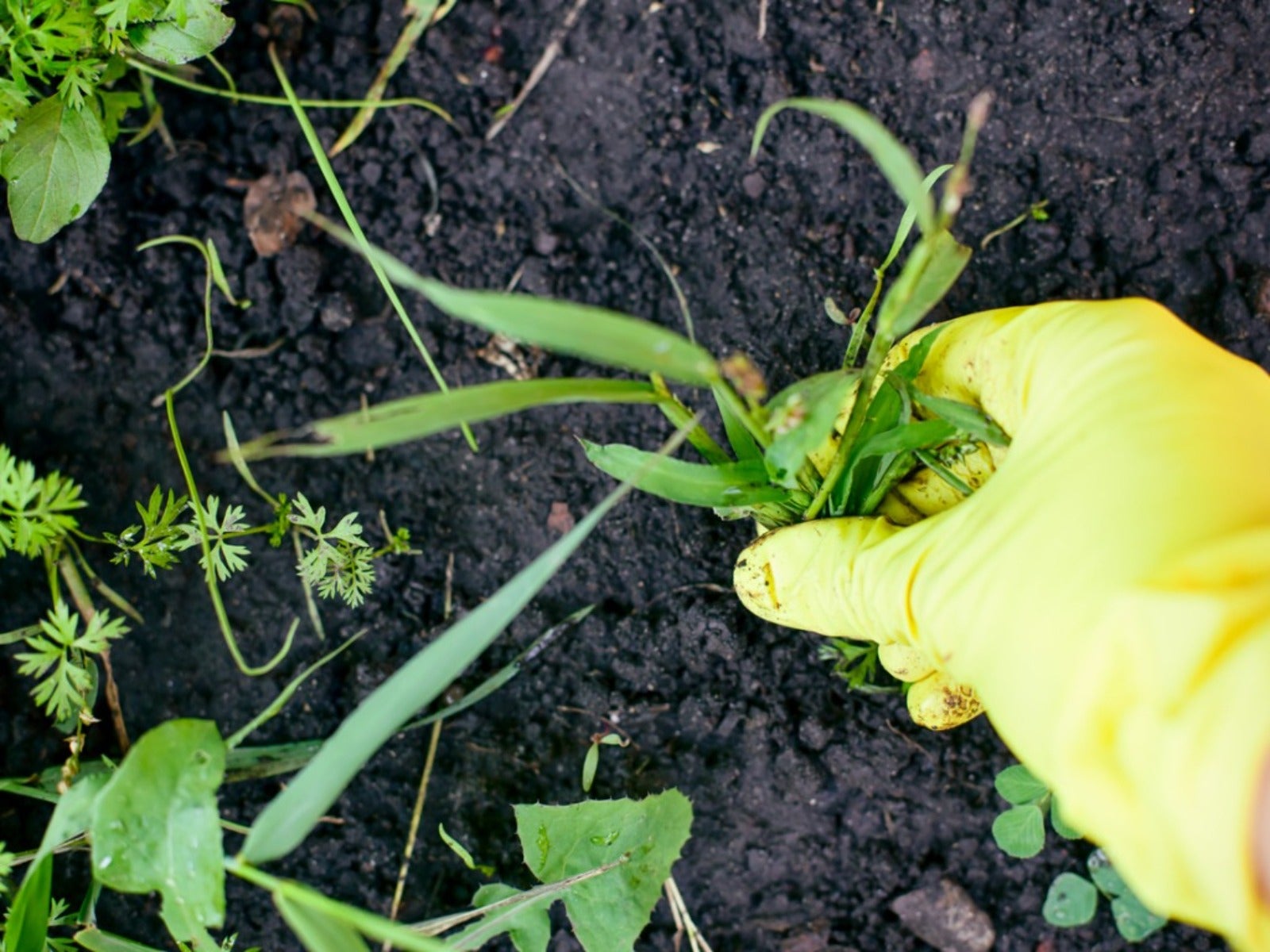Learn The Basics About The Weed Seed Bank In The Soil

If you routinely have a problem with weeds in your landscape, there’s a reason -- it’s called a soil seed bank. A weed seed bank in soil is nature’s way of ensuring that weeds survive regardless of your attempts to eradicate them. Weed seed bank management techniques run the gamut from solarizing to poisoning... some with more success than others. So how do you get rid of a soil weed seed bank? Read on to learn all about seed banks and how to win the war against the weeds.
Weed Seed Bank Definition
A weed seed bank is a reservoir of viable seeds in the soil. Every bit of soil has a seed bank made up of seeds lying waiting for the perfect conditions with which to germinate. They may wait for just the right amount of rain or higher temps or more sunshine. Some varieties of seed need to be disturbed in the soil or may even require a fire to trigger germination.
Weed Survival
Agricultural soil contains thousands of seeds per square foot. The number and variety vary according to past farming techniques, soil type, region, etc. Your landscape may not have quite as many seeds in the seed bank, but they lurk there in sufficient numbers to frustrate the gardener.
How do they get there? They blow in on the wind or are carried in by wildlife. They may be brought in on planting medium or manures, or even in transplanted plants. Many common species of weeds can produce thousands of seeds per season from a single plant. And then there’s viability.
Viability means the length of time the seed will remain usable, that is how long it can sit around and still germinate. Some seeds like dandelion only persist for a short period of time, while others like purslane can survive for 20 years, purslane for 40, and mullein seeds for up to 100 years!
How to Manage the Weed Seed Bank
Controlling weeds may be accomplished either in the short term or long term. Short term management means controlling weeds during initial crop growth, while long term management works to control weeds all season.
The most foolproof way to control weeds in the seed bank is to allow the seeds to germinate. Seedlings can then be killed either with chemicals or mechanical controls, or by planting cover crops to suppress them.
Gardening tips, videos, info and more delivered right to your inbox!
Sign up for the Gardening Know How newsletter today and receive a free copy of our e-book "How to Grow Delicious Tomatoes".
Although it seems counter intuitive, the benefit of allowing the weed seeds to germinate is that it will reduce the number of seeds in the seed bank. Provided the weed seedlings are not allowed to mature and produce seed, the seed bank is further reduced.
This in turn prevents weeds from popping up later in the growing season, competing for soil nutrients and water with crops or established plantings. This method of seed bank control is called the “stale seedbed” technique. It not only depletes the number of seeds in the soil but also eliminates the production of new weed seeds.
How to Control Weeds with a Stale Seedbed
Start implementing a stale seedbed several weeks before planting by cultivating the area. This initial cultivation works two ways -- by killing any overwintered weeds and by bringing weed seeds to the soil surface where they are exposed to light and water, the better to germinate.
This successive batch of weeds may sprout overnight or over the course of a few weeks depending upon the weed seeds present and conditions. When the weed seedlings are still small, cultivate again. Repeat cultivation as needed up until planting time. Three cycles of cultivation are often all that is needed to significantly reduce the number of weeds.
To ensure this method of weed suppression works, don’t allow the weed seedlings to grow large. Till when the seedlings have just emerged before leafing out, when they are in the white thread stage. Don’t cultivate deeply. Only break the surface down a couple of inches (5 cm), possibly less. This method requires soil moisture, so be sure to irrigate the area after cultivating.
While establishing a stale seedbed may push planting back a bit, the absence of weed competition will give the area access to more sun and water, increasing growth.
Note: Any recommendations pertaining to the use of chemicals are for informational purposes only. Chemical control should only be used as a last resort, as organic approaches are safer and more environmentally friendly.

Amy Grant has been gardening for 30 years and writing for 15. A professional chef and caterer, Amy's area of expertise is culinary gardening.
-
 ‘Coral Charm’ Peony Care For Sublime Semi-Double Peonies With Lush Salmon Pink Flowers
‘Coral Charm’ Peony Care For Sublime Semi-Double Peonies With Lush Salmon Pink FlowersPeonies are known for their soft baby pink or magenta tones, but if plushy coral blooms are your thing, here’s our guide to the ultimate ‘Coral Charm’ peony care
By Tonya Barnett
-
 How To Grow Seeds Quickly: 8 Expert Tricks For Fast Flowers & Crops
How To Grow Seeds Quickly: 8 Expert Tricks For Fast Flowers & CropsIt's never too late to start growing! Jump-start your flower or vegetable garden with these pro tips and tricks for germinating seeds in record time.
By Amy Grant